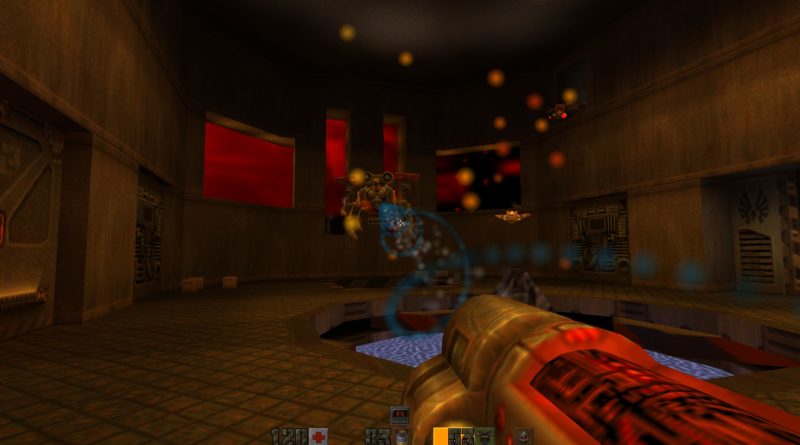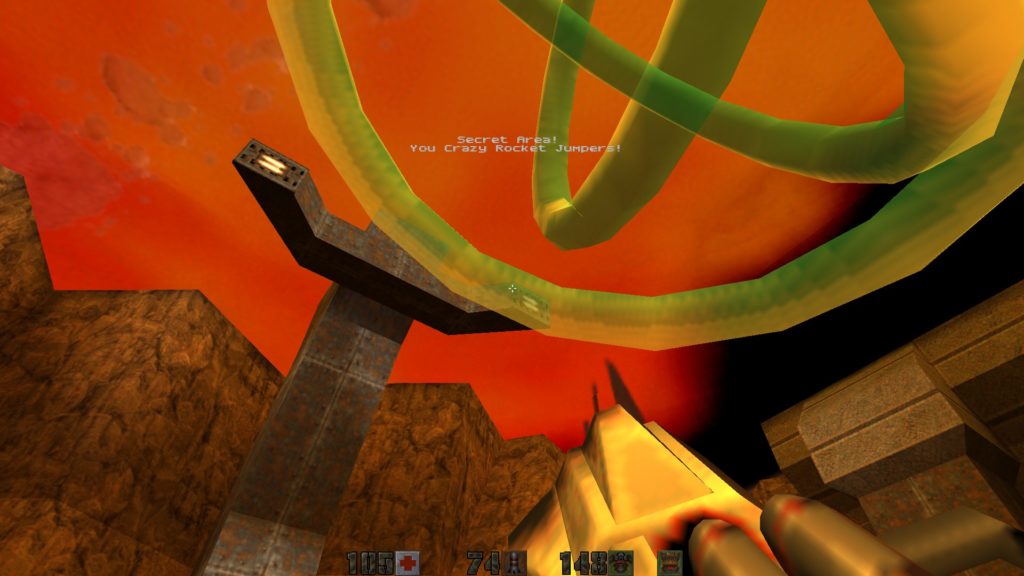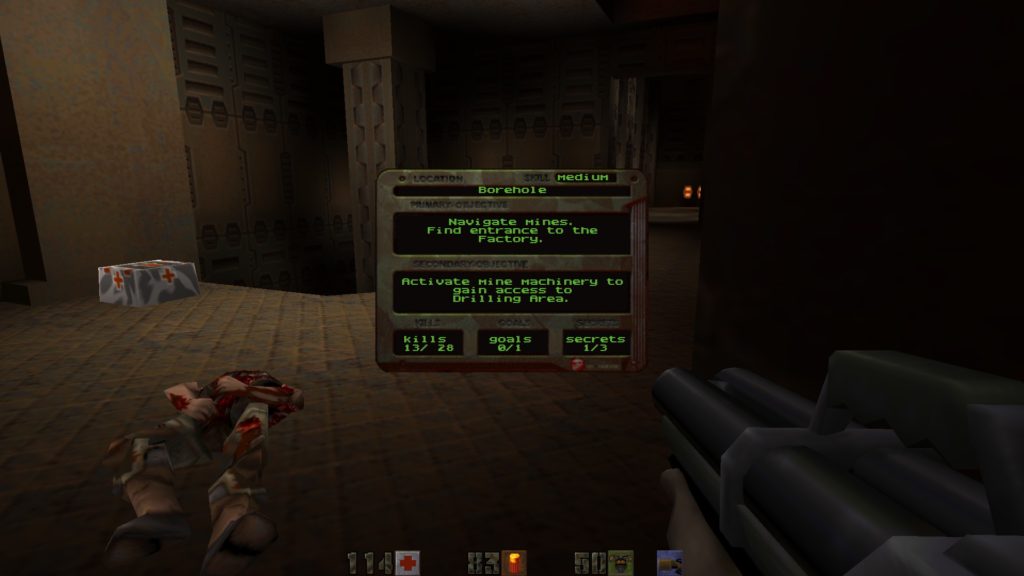Quake II RTX – Review
Having recently finished Quake’s expansion packs, I was curious to see where id Software went from there. Imagine inventing the FPS genre, codifying it, and then propelling it into the third dimension within a mere 4-year span. Even more impressively, they’ve gone back and updated Doom and Quake to run perfectly on modern systems. At first, I didn’t think they’d given Quake II the same treatment, before remembering an experimental tech demo I encountered at GDC 2019:
Quake II RTX is a “remastering” of the original game that ray traces every single asset. Ray tracing is a unique way of handling reflections that allows world objects to accurately reflect light. If you want to know more, watch the above video where Nvidia’s Tom Petersen explains the tech to me in more detail. If you’d like to experience it, there’s a free demo version on Steam you can play right now. Plus if you own the base game you can play the entire thing, like I did. So this is going to be a dual review of both the tech demo and Quake II itself.
Quake II RTX

Now, I must confess I didn’t play the entire game with ray tracing enabled, as my computer couldn’t really handle it. It essentially turned my game into a slideshow. But from what I saw, it’s very good-looking and I’m not surprised we’re seeing many more games using ray tracing tech. You can turn the RTX off in the options, making Quake II RTX an easy way to experience the base game without requiring QoL mods. Widescreen 1080p is enabled by default, controls are adjusted to more modern expectations, and everything’s fully customizeable in options. My only question involves music; I had it enabled in the options, but never heard a single song.

There are several expanded gameplay settings in this new version that I really appreciated, like toggleable third-person and a playable female character. Since Quake II recycled Ranger’s grunts from Quake, I found them overly distracting and appreciated being able to play as Athena instead. Overall, I recommend Quake II RTX to anyone interested in playing Quake II. For ease of use, customizeability, and compatibility, it’s the easiest way to play this old classic, and it’s free to boot.
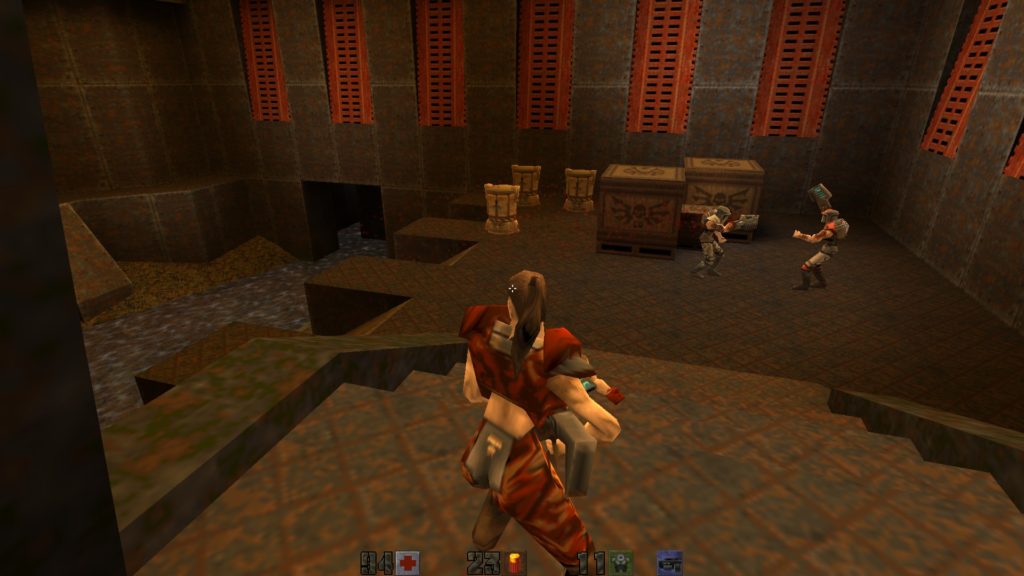
Quake II
Quake II was released 1½ years after its predecessor. It continued id’s tradition of massively-improving their underlying tech and showing the industry a new benchmark for FPS gameplay. It has a much more cogent storyline and cohesion of artstyle than Quake 1, which is ironic considering John Romero quit id because he wanted to make a story-focused title. (One day I may review Daikatana, his infamous attempt to actually do so.) Despite me saying this, the story is definitely throwaway and the real focus is on the gameplay.
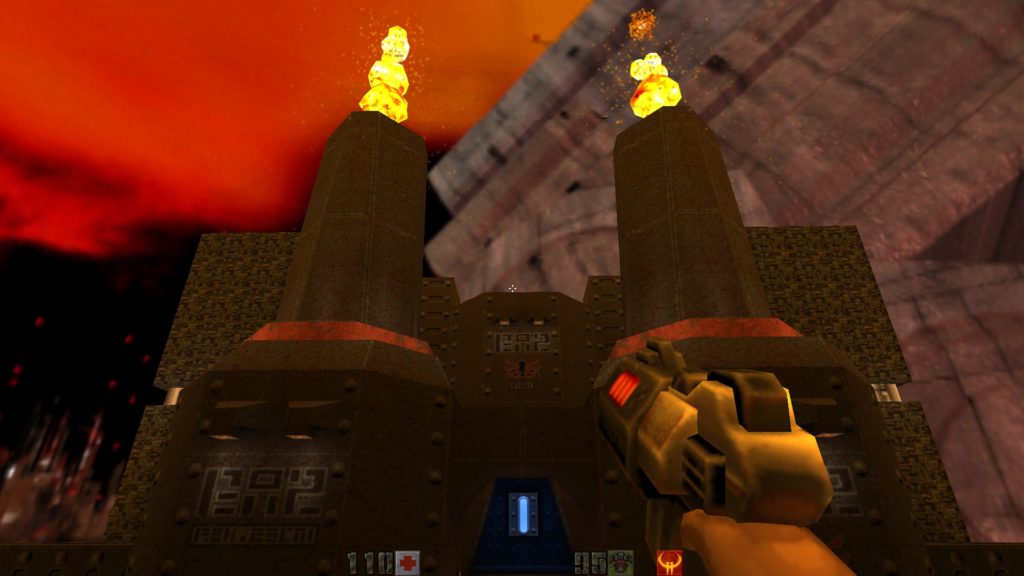
Most of the improvements come in the form of visual/animation overhauls; enemies will dynamically crouch, dodge, or change positioning in between salvos. They’ll suffer variable bloodstains/dismemberments as you shoot them, and their corpses will attract flies when left on the ground long enough. A new medic enemy inherited the arch-vile’s resurrection ability from Doom, encouraging players to gib every corpse after a firefight. Several maps include neutral NPCs in the form of pitiful prisoners crawling around begging the player to either save (or kill) them. Explosive barrels can be pushed around by running into them. In general the game feels like it has a rugged (if rudimentary) physics engine, which all keeps gameplay from getting overly predictable.
Movement
The inclusion of crouching is the main movement upgrade from Quake I, and is exclusively used to create crawlspaces. I like this, as it leads to more creative map design. In general, while gameplay is a bit slower than Quake I, you’re still plenty fast. Rocket jumping still isn’t wholly embraced, but the devs were clearly aware of it and often hid messages/secrets behind hidden jumps. Ladders also make their first appearance, and they’re so weird. You don’t really climb, it’s more like you ‘float’ upwards or downwards when you touch them. But I can’t dock too many points considering ladders still suck all these years later.
Enemies and Map Design
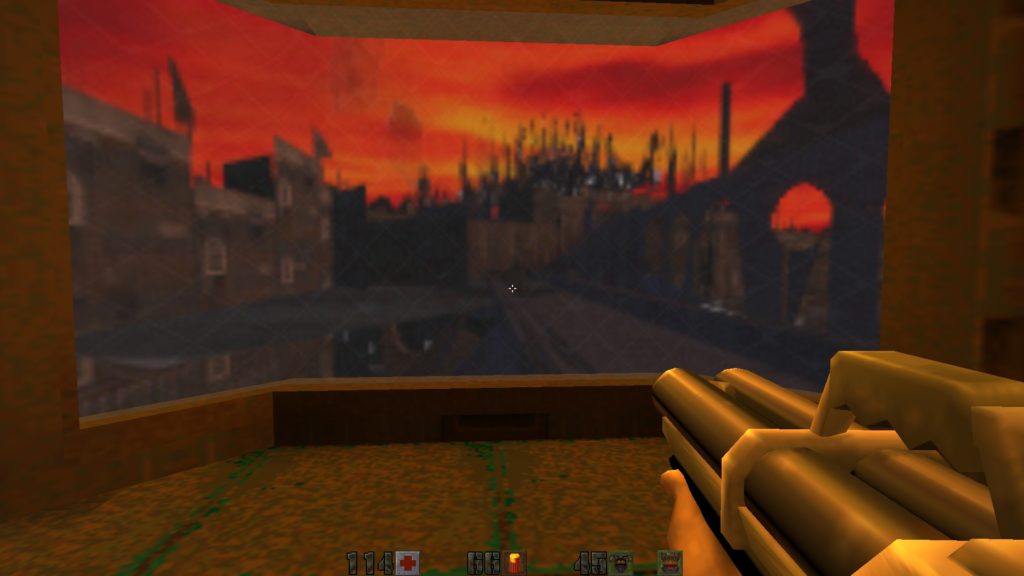
While the AI advancements were awesome, I didn’t find the actual enemies as memorable as in earlier id titles. Perhaps the sci-fi aesthetic was partially to blame; almost everyone was a cyborg zombie soldier of various stripes. I also found monster-infighting very unreliable to trigger. On the other hand, I loved the advancements in map design. As mentioned, this is the first id game where the environments feel like real places. The skyboxes are detailed and you’ll occasionally get ships flying overhead or random radio chatter. Quake II RTX’s advancements in lighting and reflections definitely helped a ton in this category, as well. My favorite maps were always the ones that branched away from starbases to send you into mountainscapes, alien pyramids, or lava caves.
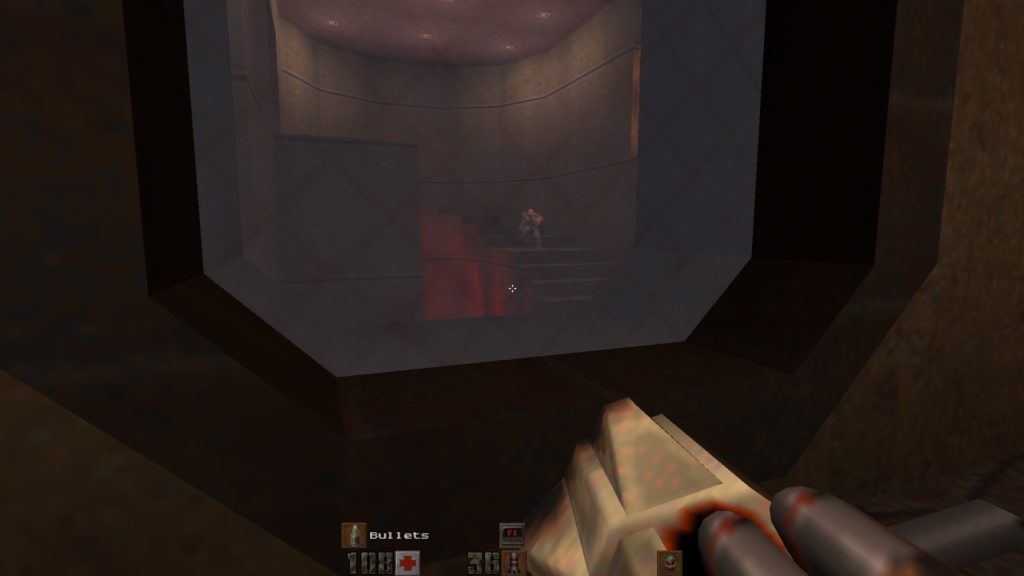
Weapons
I really liked the guns in Quake II. Much like older titles, id worked to ensure the player would be constantly shuffling their equipped firearm and no one weapon outshined everything else. There’s no emergency melee, in an historical first, instead you start with a worthless infinite-ammo pistol you should never use. But other than it, I encountered situations for everything in my arsenal, even late-game. The BFG is back, and kicked just as much ass as in Doom. And the final boss even wields one against you!

Most of Quake’s powerups return, and a few more flesh out that gameplay element. Some like silencers didn’t seem to do anything, but were still interesting gameplay concepts. I loved how you can ‘store’ quad powerups and rebreathers to use later. I confess I had trouble remembering all their keybindings, but I still prefer that over powerups activating the millisecond they’re grabbed. Throwable grenades are a new mechanic, you can even “cook” them to increase distance thrown. I found I rarely had use for them, but their inclusion certainly wasn’t hurting anything.
Player Direction
Quake II took several large steps forward in showcasing progression to the player, likely to compensate for the long, sprawling, multi-layered maps. There’s no automap, just like in Quake, but I found myself getting lost a lot more due to how large and backtrack-heavy the levels were. Pressing F1 brings up a PDA which tracks your kills and reminds you of your current objective. Endlevel screens are odd, existing as per Quake but lacking all the statistics/data. The speedrunning timer’s gone, probably because John Romero wasn’t there to vouch for it. Honestly endlevel screens felt more like something vestigial the devs couldn’t remove wholecloth from the engine.

In Conclusion
Overall, I’m very happy with Quake II. It may not have advanced the industry to the same degree as its predecessor, but it’s still a great game with a ton of creative design choices. In general, I find it fascinating to compare this game to Half-Life. Both games iterated from Quake in similar ways, but Half-Life prioritized story whereas Quake II chose gameplay. Nonetheless, I highly recommend fans of Quake or Half-Life try this game. It’s a really interesting look into that era of FPS design history. And with Quake II RTX, you can experience next-generation lighting to boot!
